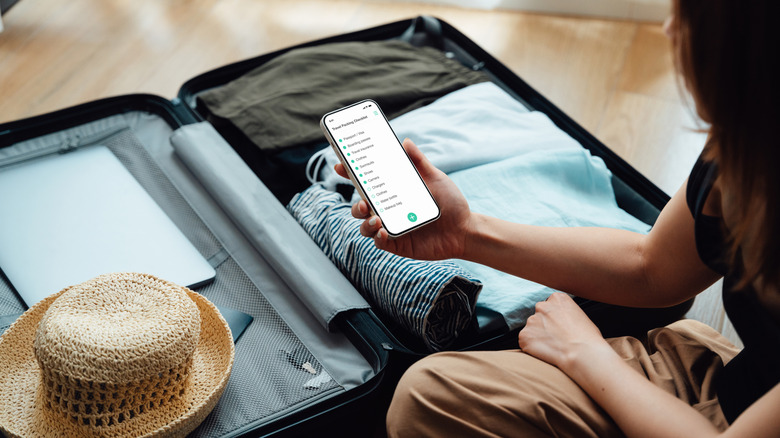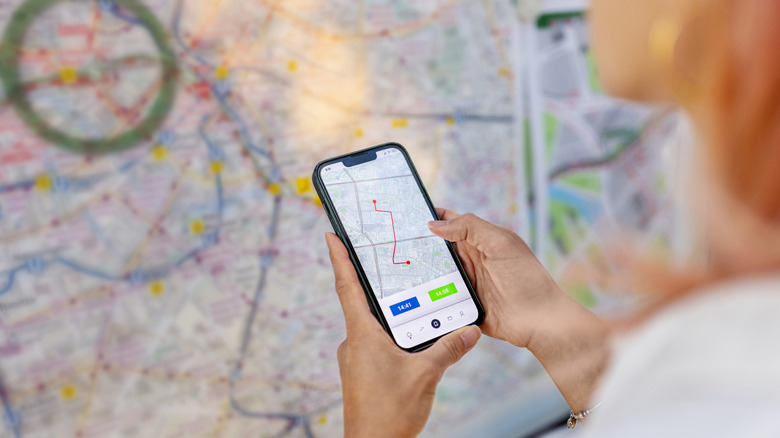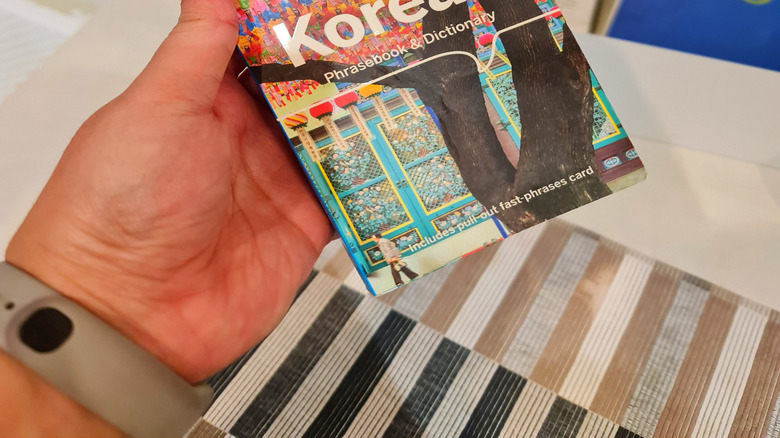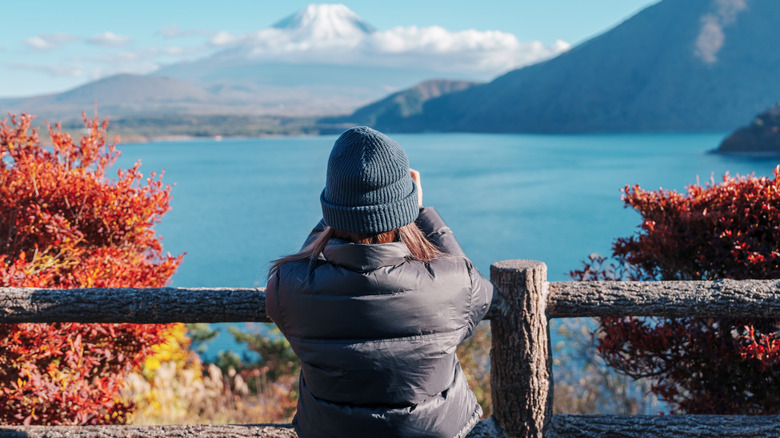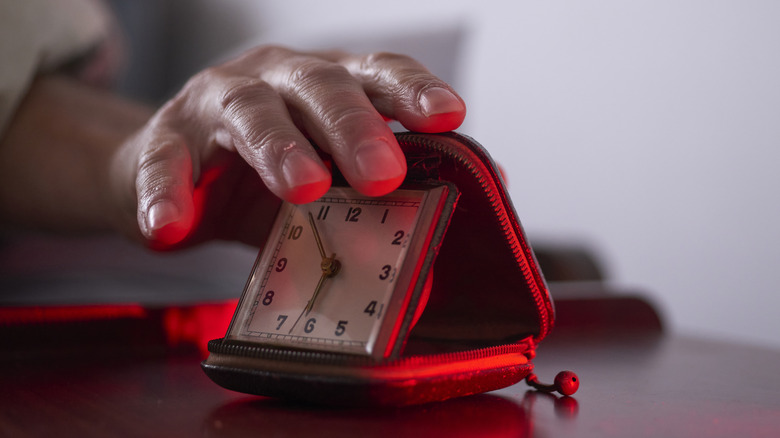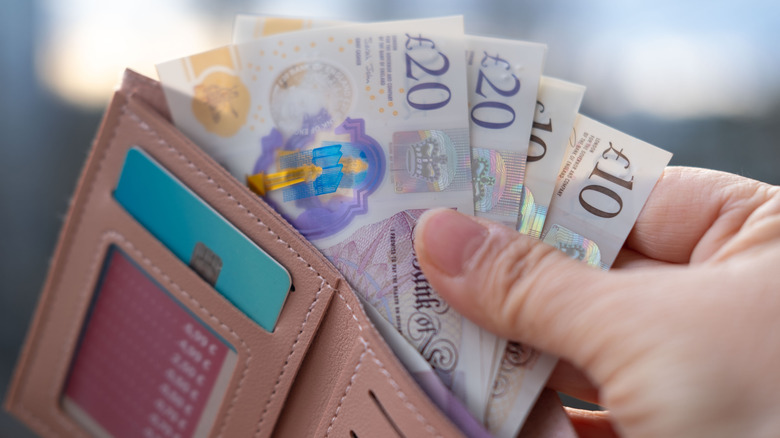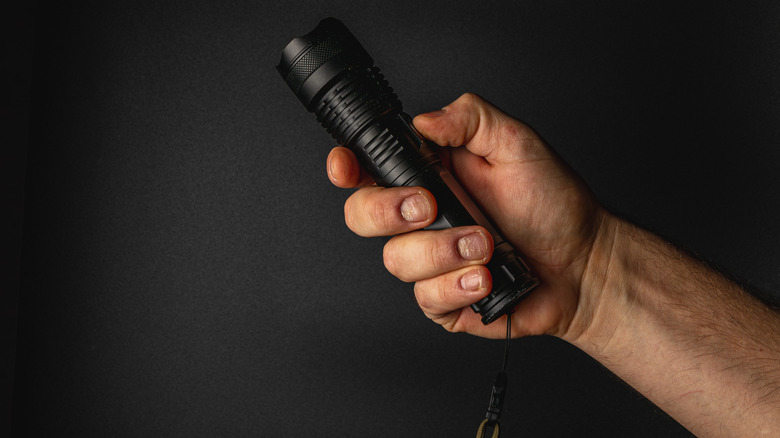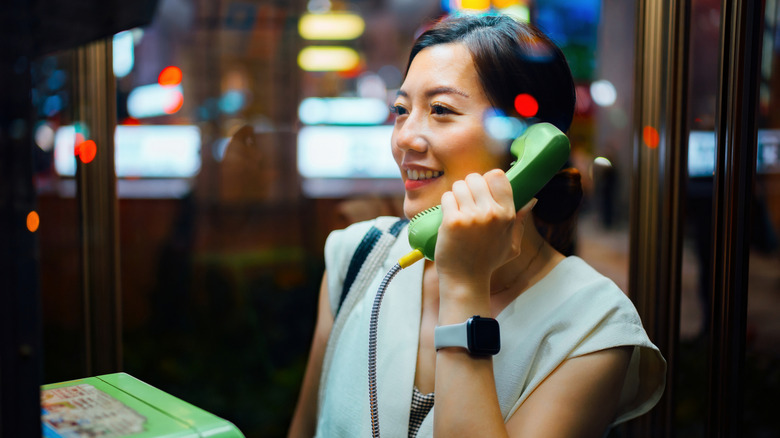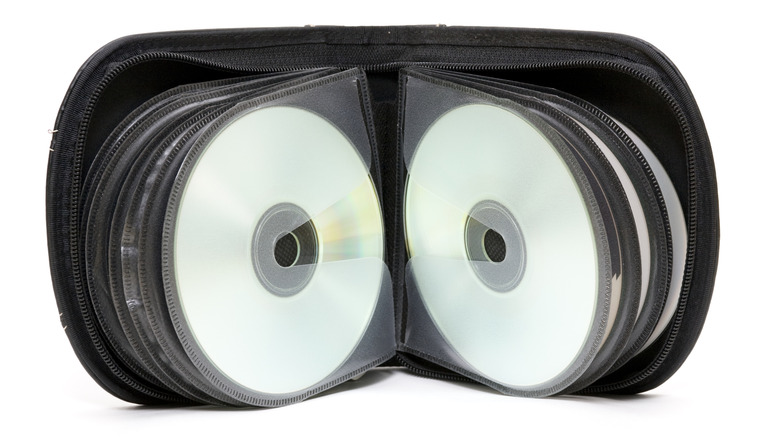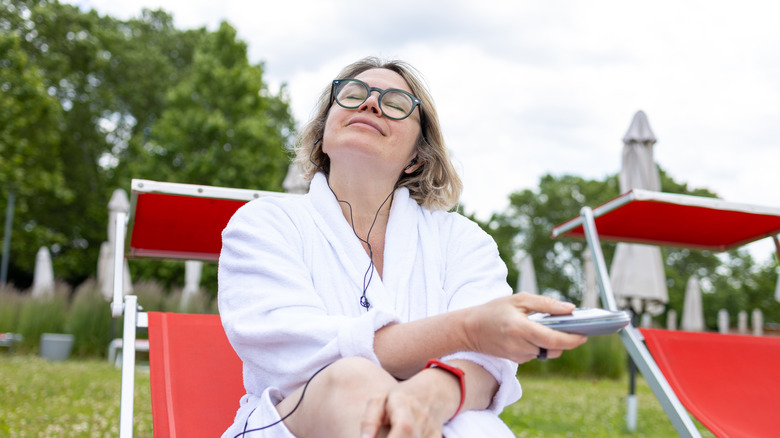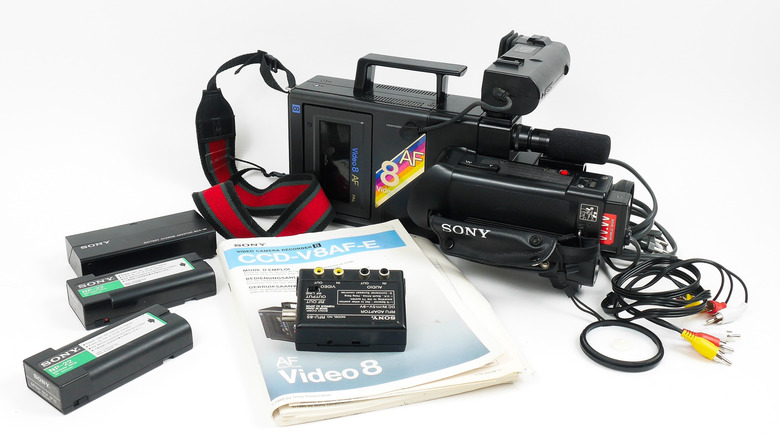13 Traditional Travel Items Your Smartphone Has Replaced
We may receive a commission on purchases made from links.
When older travelers get all misty-eyed about the past and how things used to be, one of the topics they often fall back on is the amount of gear they used to lug around. To do half the things travelers can do nowadays requires a lot of equipment. Today, you can just download an app and have your smartphone do the things traditional travel items did back then. Navigation, communication, entertainment, photography, and even getting up at the crack of dawn to catch that early-morning flight are all things the smartphone can help you with now. Just a couple of decades ago, you were talking about dozens of pounds added to your backpack or suitcase, along with a whole lot of inconvenience.
Technology has undoubtedly made travel easier. Has it made it better, though? That point is up for debate. On the one hand, the smartphone has placed boundaries between tourists and locals. You no longer need to ask strangers for directions or suggestions, which can lead to interesting conversations or unexpected adventures. On the other hand, you can now communicate with said stranger in ways you never could in the past. With that in mind, here's a closer look at some traditional travel items that the smartphone has quietly replaced.
Physical maps
Any seasoned traveler will testify that physical maps were once absolutely necessary but completely impractical. Who could forget desperately coaching passengers who had the paper key to your destination stretched across the dashboard and half the windshield? Or pulling over every few minutes to spread it across the hood and squint at the tiny print? Finding your way around unfamiliar streets while trying not to look like a tourist was also a joy, and there always seemed to be a coffee stain obscuring the exact area you needed to see. Then, of course, there was the horror of wrestling with the unwieldy beast when it came time to fold it back down.
Thankfully, you can now navigate streets like a local and negotiate highways without missing lanes or exits. Map apps guide users through alleyways and boulevards with ease, even offering real-time traffic reports and rerouting suggestions. No unfolding and attempted refolding is required. You don't even need to touch your phone if you're driving. Wake up your smart assistant and ask it for directions.
It was Google Maps that first changed the navigation game. It still packs in more features and smarter tools than others and is easily the best map app for finding your way around cities. It also has well-stocked, community-driven reviews to help you find good coffee shops or restaurants when it's time to stop. Maps.me is another good option, especially for hikers. It offers off-grid essentials that Google often doesn't, like water sources and detailed trails. So, even if you're one to miss the origami challenges of the past, the best place for physical maps now is in the glove box as an emergency backup or proudly displayed on a kitchen wall, coffee stains and all.
Phrasebooks
Smartphones have all but replaced phrasebooks, and it's no wonder. In the past, using one to tackle tonal languages like Mandarin often led to embarrassing (or hilarious) situations due to mispronounced words. Those purchased in far-flung destinations often ended up being comedic reads with wildly random phrases like "Is there a typewriter on the desk?" There may actually have been a situation where knowing a line like that would prove to be helpful, but when you just wanted to find the bathroom, flicking through pages of pointless dialogue didn't help.
Nowadays, you have the excellent Google Translate with its downloadable dictionaries for offline use, which is just one of its features you need to know before your next trip. It's super easy to use and offers translations in 249 languages. There's also a camera feature that translates text, including handwriting, so there's no more trying to decipher illegible bills or guessing what those odd-looking menu items are.
We don't want to discourage language learning just because there are apps that generate timely translations. There can be no more satisfying travel challenge than communicating with a local in their own language. The smartphone helps here, too. Duolingo is one of the best apps for learning languages, and there are plenty of other excellent options. You can subscribe to educational podcasts to boost your communication skills, while downloading flashcards is another method that significantly reduces the need for carrying around weighty phrasebooks.
Cameras
Despite bulky builds and weighty lenses, DSLRs and mirrorless cameras are what professionals and committed enthusiasts use when traveling. However, smartphone cameras have made significant advancements in recent years, to the point that the average snapper now thinks they're on par with Annie Leibovitz.
There is no doubt that good smartphones boast lenses that easily replace the point-and-shoots of yesteryear and offer quality images well worthy of Instagram uploads and travel blog content. Even pro photographers will admit to using one on occasion. Therefore, for most travelers, having a good lens array on their smartphone means there's no longer any need to carry around a dedicated camera and all its accessories. The flagship phones are the ones to turn to if you're serious about quality shots on your travels. Samsung Galaxy Ultras and iPhones improve with every new iteration, while left-field options like OnePlus compete well.
The Google Pixel 9 Pro is one of SlashGear's favorite camera phones. It features the best lens selection Google has offered yet, with the wide, ultra-wide, and telephoto lenses delivering excellent results in just about any lighting. It's reliable and easy to use, with sharp, detailed shots achieved with minimal effort on your part. Its HDR+ system boosts contrast, sharpness, and exposure balance to capture realistic tones and handle high-contrast scenes, such as dazzling snow on deep blue skies. It's simply one of the best choices for people who want top-tier shots without learning pro-level skills and endless editing. Just make sure you use that saved time to learn a few smartphone photography tips and install all the essential apps you'll need to get nearer that Leibovitz level.
Travel alarm clocks
The travel alarm clock may have been small and compact, but it did nothing but annoy you first thing in the morning with its incessant high-pitched beeps. They were essential for catching early-morning flights or waking up for that sunrise tour. However, they are now another travel item made redundant by the smartphone, which has a built-in alarm app for a wake-up call that's every bit as annoying as those relentless chirps. No matter how often you change the jingle, the smartphone's morning melody soon becomes your worst enemy. That said, they do a lot more than you might realize. However, there's no need to use the standard option — there are plenty of alarm apps with features for specific needs. Some are good, but others are definitely not.
One that is particularly helpful for reluctant risers is Sleepwave. It monitors sleep using ultrasonic sound waves and wakes you up when you're in REM rather than pulling you out of a deep slumber. It actually works and makes mornings a little less groggy and a lot more tolerable, traveling or not. The free version is plenty if you just want a gentle daily awakening, while it also provides information on time spent in different sleep stages and insights into the quality of your Zs. The paid version provides access to more data and additional features, such as dream journal logging and audio recordings, allowing you to discover precisely what you said to upset your partner in your sleep.
Guidebooks
Back in the day, most travelers used guidebooks. They were very useful, especially when you consider the fact that globetrotters back then didn't have easy access to the internet, if any at all. Lonely Planet more or less had a monopoly on the guidebook industry. Okay, there were others, but LP was prevalent among global adventurers, and this often led to everyone traveling through the same places. In other words, whatever the travel bible said, travelers did.
With smartphones accessing the internet from almost anywhere these days, travelers can gain valuable insights from numerous websites, blogs, and forums. You can easily find out about your destination and learn all the places worth visiting and all the things you can do there. Additionally, apps like Booking.com give travelers real reviews on hotels and guesthouses instead of relying on the opinions of a single author.
Other apps, like Rome2Rio, give transport options for getting from A to B, including estimated prices. It even has options for less-traveled places. Before the smartphone revolution, you often showed up at the bus station, if you could find it, and hoped there was transport going your way. Skyscanner is another helpful app that contributes to the redundancy of the guidebook. It's an excellent resource for seeking out deals on airfares, and there are often mobile-only deals and bundled packages with flights, hotels, and transport for when you arrive.
Travel wallets
Travel wallets or document holders were once a necessary travel item for keeping your passport, tickets, and insurance documents safe and organized. Nowadays, the only document anyone needs to physically carry is the passport, which most travelers now opt to put in a passport holder. Your smartphone can store all the rest via the cloud. Google Drive and iCloud remain the most convenient choices. On top of storing vital documents in virtual folders, travelers can also upload thousands of photos and videos for safekeeping.
However, digital nomads and other traveling professionals who need stricter privacy controls and zero-knowledge encryption might prefer pCloud. It's one of the best cloud storage options for travelers, especially those who want essential documents safely backed up with easy access from anywhere. Generous plans are available with 500 GB, 2 TB, or even 10 TB of storage. Payment plans are flexible, with monthly and yearly options, or you can make a one-time lifetime settlement. It even includes a built-in music and video player to stream all your stored media, and is available for both Android and iOS.
Address books
Those old address books weren't just for keeping details of friends and family. They held everything from embassy numbers to business contacts, and since all the entries were handwritten, few people bothered making backups. This meant that losing it was simply a disaster, and recovering all that essential information was a nightmare. Smartphones have, thankfully, made that panic a thing of the past. They usually come with a built-in contact app, which backs up your entire list to either your Google account or iCloud. They are fine for everyday use, and contacts are easy to restore if your phone is lost or stolen.
However, it's worth having something better if you're a frequent traveler. We listed Contacts+ as one of the best contact apps for iPhone in 2023, but it's also available for Android. Anyone who wants to sync across devices while being able to remove duplicates and even scan business cards straight in should consider this seriously handy free app.
Flashlights
Smartphones mean you don't need to pack a separate flashlight for most trips. The built-in light is bright enough for things like reading, fumbling around in the dark, finding your way to the bathroom at 2 a.m., and navigating back to your accommodation at night. They are not usually as strong as a dedicated torch, but they are good enough for typical travel use. Walking in from your car or searching under the couch for your keys became that much more illuminating when phones became flashlights.
However, a smartphone light just won't cut it when you need both hands free. If you're setting up camp, cooking after dark, or picking your way over rocks at night, you need a proper headlamp that stays focused exactly where you need it. The Black Diamond Spot 400-R is one of those essential gadgets that make life on the road easier. It's light and bright, features multiple beam modes, and boasts up to 400 lumens for as long as 4 hours at its maximum setting. This makes it a valuable addition for RVers, campers, backpackers, hikers, and others who will all appreciate it when the sun goes down. But if you just need a flashlight for everyday tasks, your smartphone will likely do the job.
Travel journals
Once upon a time, globetrotters wrote travel journals, especially those who were on big adventures and thought of themselves as the next Bill Bryson. Jotting down events and thoughts was something many intended to do on a daily basis to have something solid that served as a record of their journey and a reminder of the experience. Nowadays, location-tagged photos and voice memos capture memories you'd otherwise lose and are a much easier way to record your experiences than the endless writing involved in keeping a journal.
There are plenty of excellent apps to help you cherish your memories, with the aptly named Journal being one for travelers who want more than just a basic travel log. It's a cross-platform tool with offline access, speech-to-text, photo and location tagging, and Google Drive sync. You can use it to keep notes, store photos, and make plans all in one place. It even handles fitness tracking, mood logs, and map integration for tagging spots you've visited or when planning trips.
Calling cards
A phone's primary use is to make calls. Back when we weren't carrying one around in our pockets all day, calling home from another country came with a bunch of problems we no longer worry about. Thankfully, the calling card is one traditional travel item we do not need to buy anymore. They had confusing rates, limited minutes, and annoying PINs you had to scratch off and enter — if you could even see the tiny print.
You also had to find a payphone, and the call quality was often poor, with frequent dropped connections. Running out of minutes mid-call was another issue of the past, meaning you usually had to go back and buy another card. And they weren't that cheap, either! Now that almost everyone has a smartphone, you can simply call home using WhatsApp, Messenger, FaceTime, or a number of other apps. It's a simple process, and you can even make video calls from your smartphone when Mommy misses her little angel's face.
CD wallets and CDs
There was a time when CD wallets were an essential travel item. Music-loving backpackers often carried around multiple binders or wallets full of ripped compilations and favored albums. Sitting on balconies introducing fellow explorers to your fine music taste was something that added to the experience, which makes CDs and other physical musical media among the most fondly remembered aspects of the analog age. Nowadays, people don't even choose their songs or listen to complete albums. It often just starts with a single selection, then DJ Algorithm starts spinning the tracks.
That said, those algorithms are pretty good, especially if you use Spotify. SlashGear ranks it number one when it comes to music streaming services, thanks to its massive library, easy offline downloads, and smart playlists that keep the fresh music coming. Audio quality is good enough for most, but if you have audiophile tendencies, Tidal and Qobuz offer lossless and hi-res options that are worth a look. In addition, Apple Music offers iPhone users lossless and spatial audio at no extra cost.
Portable music players
To play the ripped compilations and beloved albums that packed those wallets, travelers needed a portable music player. The modern smartphone really is an all-in-one when it comes to music, because on top of replacing physical formats like CDs, it also plays the music, meaning there's no need to carry a separate player. Flagship phones like the iPhone 16 and Samsung Galaxy S25 naturally offer the best audio performance. But, given they don't have a headphone jack, you'll need to pair either of them with a decent portable Bluetooth speaker or fit them with a quality USB-C to 3.5mm adapter.
If you're one of those who believe wired listening is superior, but you don't want to fuss with adapters, the Sony Xperia 1 VI offers quality audio and a headphone jack. Pair it with a good streaming service, and you've got dynamic sound delivered straight to your ears without fuss. According to What Hi-Fi, the audio is detailed and balanced, and while it is still flagship-priced, it's one of the best choices for top-quality playback while traveling.
Camcorder
People used to carry camcorders on trips — tapes, chargers, padded bags, the whole lot. Now your phone shoots and stabilizes footage, while you can edit your videos and upload them to Instagram before you've even started making your way back to the car. Most leading phones offer 4K video shooting for high-quality memories. But you can take things even further with a few choice apps.
CapCut offers plenty of video editing tricks that feel like magic and significantly add to the features offered by built-in video apps, even those of high-end smartphones. You can combine clips, add music and text, use transitions, and export in formats made specifically for social media. It even does things the camcorder never could, like AI tracking to keep subjects centered, background removal for cleaner shots, and beat-synced cuts for social media. You can also quickly pull off edits that would usually take a lot longer on a computer, which makes your phone not just a camcorder replacement but a complete editing studio you can carry in your pocket.
